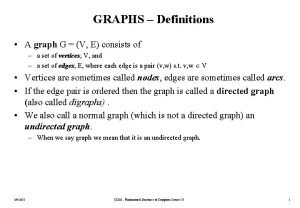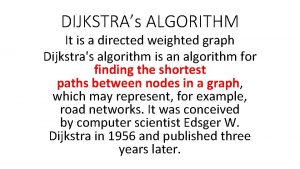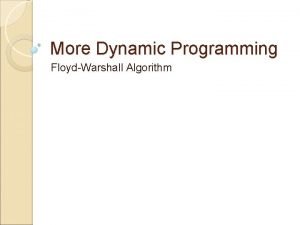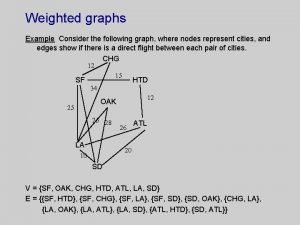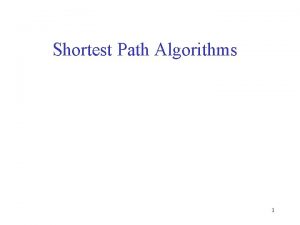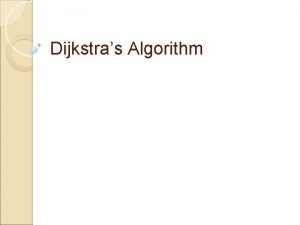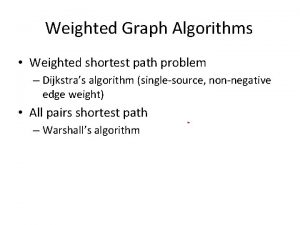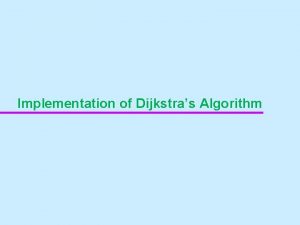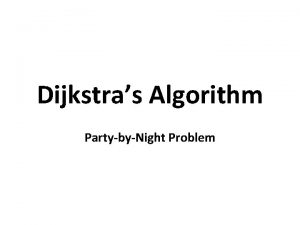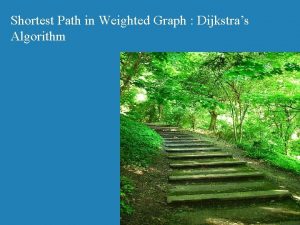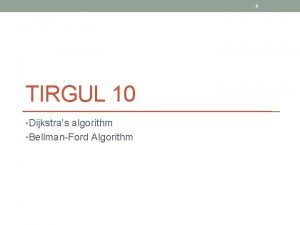DIJKSTRAs ALGORITHM It is a directed weighted graph



![LEARNING AGENT’s [An agent] is said to learn from experience E with respect LEARNING AGENT’s [An agent] is said to learn from experience E with respect](https://slidetodoc.com/presentation_image_h/a46e5252e4a23f8602aa8983f3b6aaaa/image-4.jpg)




- Slides: 8

DIJKSTRA’s ALGORITHM It is a directed weighted graph Dijkstra's algorithm is an algorithm for finding the shortest paths between nodes in a graph, which may represent, for example, road networks. It was conceived by computer scientist Edsger W. Dijkstra in 1956 and published three years later.

• The major disadvantage of the algorithm is the fact that it does a blind search. • consume a lot of time waste of necessary resources. • Another disadvantage is that it cannot handle negative edges. This leads to acyclic graphs and most often cannot obtain the right shortest path.

How it work’s
![LEARNING AGENTs An agent is said to learn from experience E with respect LEARNING AGENT’s [An agent] is said to learn from experience E with respect](https://slidetodoc.com/presentation_image_h/a46e5252e4a23f8602aa8983f3b6aaaa/image-4.jpg)
LEARNING AGENT’s [An agent] is said to learn from experience E with respect to some class of tasks T and performance measure P, if its performance at tasks in T, as measured by P, improves with E.

EXAMPLE’s • DATA MINING • ROOUTE FINDER • TIC-TAC-TOE


• Types of machine learning • How will the system be exposed to its training experience? • Direct or indirect access: • indirect access: record of past experiences, databases, corpora ∗ direct access: situated agents → reinforcement learning • Source of feedback (“teacher”)…. . ? • supervised learning ∗ unsupervised learning ∗ mixed: semisupervised (“transductive”), active learning, . .

What is different about reinforcement learning: Training experience (data) obtained through direct interaction with the environment Influencing the environment Goal-driven learning: Learning of an action policy Trial and error approach to search: Exploration and Exploitation
